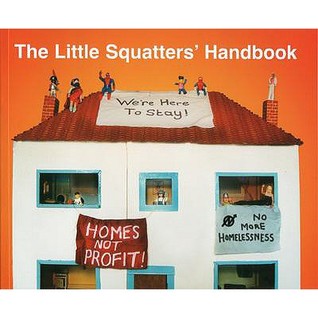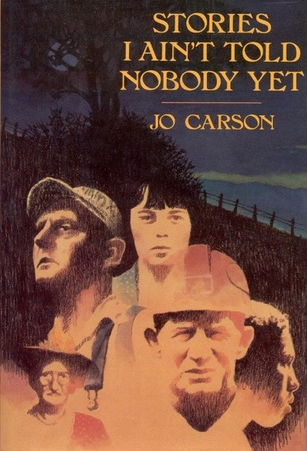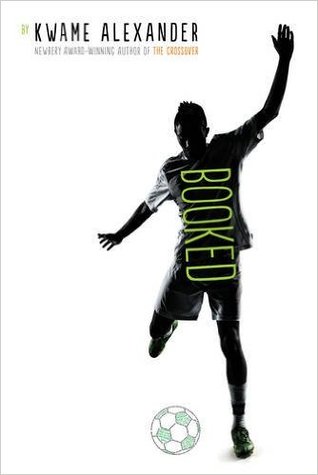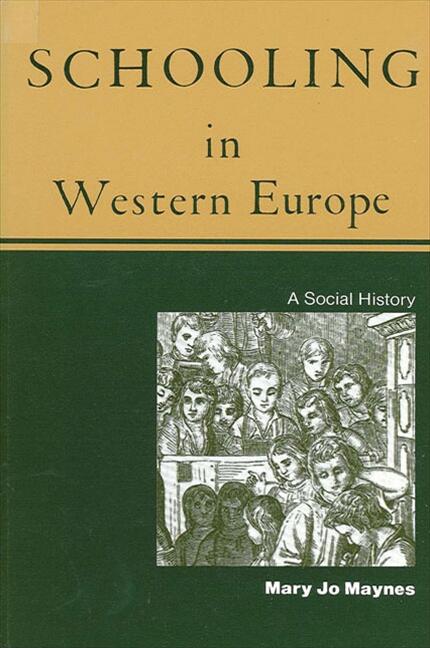It was no doubt true that early modern parents often found occasion to complain about the instruction their children were receiving. Where the teacher had been hired directly by parents, they could always remove their children and look for another teacher. Where an official teacher held a monopoly, of course, things were not so easy. In communities where the teacher was hired by the municipal council for a year's term, pressure could be brought to bear to hire someone else. But the problem could be especially severe where the teacher was hired and supported by outside church authorities or by a local school patron. In these regions, parents had little recourse but to complain or petition, and records of parental complaints about teachers, and petitions to higher authorities to make the improvements which parents could not make themselves, are testimony of at least occasional parental dissatisfaction.
User Profile
Exhausted anarchist and school abolitionist who can be found at nerdteacher.com where I muse about school and education-related things, and all my links are here. My non-book posts are mostly at @whatanerd@treehouse.systems, occasionally I hide on @whatanerd@eldritch.cafe, or you can email me at n@nerdteacher.com. [they/them]
I was a secondary literature and humanities teacher who has swapped to being a tutor, so it's best to expect a ridiculously huge range of books.
And yes, I do spend a lot of time making sure book entries are as complete as I can make them. Please send help.
This link opens in a pop-up window
User Activity
School—and the word itself had very different connotations then than it would later—was a relationship with one master, good or bad. School was a place where most children went for a few hours a day, a few months of the year, for a few years of their life, to learn a limited number of skills and a certain familiarity with the scriptures, prayerbooks, and bills of credit or pulp books that were increasingly significant, if not dominant, features of life.
The pedagogy of the Brothers clearly anticipated many of the features of what would evolve as modern pedagogy in the nineteenth century. The insistence on orderliness, the simultaneity and impersonality of instruction, the reliance on codes and signals to usher large numbers of pupils through a rigorously ordered daily program—all of this would appear laudable to the average reformer of the late eighteenth or early nineteenth century. But the schools of the Brothers were far from typical for the Old Regime.
... it is useful to glance quickly at the exception—the one type of school which, although springing from the same preindustrial context as these already described, did produce an alternative pedagogy—namely, the schools run by the Brothers of the Christian Schools in France, Italy, and Belgium. These schools were charity schools for boys endowed by combinations of pious bequests and municipal poor funds, much like other kinds of poor schools. In fact, the Brothers were only one of many orders founded to staff these schools and to perform many other functions associated with the Catholic Counterreformation. Where these differed from the rest was not so much in the goals of their instructors as in their insistence on following a strict routine in the classroom, for which teachers were prepared in specialized seminaries. The Brothers were important both in their substantial number of pupils (perhaps as many as a quarter to a half of the boys in about a hundred French towns on the eve of the Revolution, as well as a sizable number of Italian and Belgium towns), but also in their popular pedagogic model, which persisted into the nineteenth century, gripping the imagination of even secular reformers and playing a central role in the reform of pedagogy which became general in the early part of that century.
The teaching of writing was not even included on every school's curriculum. In fact, during the earliest periods it was often taught by separate masters entirely, members of the writing craft guilds who only relinquished their right to monopoly over the teaching of this skill after a struggle. Even at the end of the eighteenth century, there were schools which taught only reading. In many girls schools, reading instruction was supplemented by manual skills like sewing and needlework rather than the less useful skill of writing. For example, the French historian J. Perrel found that in South Central France, there were many regions with more girls than boys schools. But the popularity of schools for girls seems to have been their instruction in religion and needlework, especially lacemaking.
Wherever there is evidence on the subject, it suggests that school children typically began learning the letters of the alphabet and then syllables, and later proceeded to words and sentences. This was often accompanied by a heavy dose of memorization—of Scripture, cathechism, or prayers. The emphasis was on producing the ability to "sound out"—to translate the written symbols into the sounds of speech. The final product of instruction in reading was a smooth oral rendition of a printed text. Although the earliest reading schools had centered on Latin texts—justifying the study of Latin for either religious or pedagogic reasons—by the end of the eighteenth century vernacular instruction had apparently supplanted Latin elementary schools throughout Europe. Latin prayers and the like were still taught in Catholic areas, but no longer exclusively, and rarely before reading in the national tongue. Still, many pupils were effectively learning to read a foreign language, since even where texts were "vernacular," they were printed in a national language rather than in one of the numerous local dialects still spoken in rural Europe. This process of decoding the written word, of learning its oral correspondent, was the center of primary instruction. There was no part of the traditional pedagogy that concerned itself with understanding textual meanings. More advanced instruction, once the pupils had learned to decipher print, addressed itself to more complex deciphering—that of writing in various styles—and to writing itself.
Wherever there is evidence on the subject, it suggests that school children typically began learning the letters of the alphabet and then syllables, and later proceeded to words and sentences. This was often accompanied by a heavy dose of memorization—of Scripture, cathechism, or prayers. The emphasis was on producing the ability to "sound out"'—to translate the written symbols into the sounds of speech. The final product of instruction in reading was a smooth oral rendition of a printed text. Although the earliest reading schools had centered on Latin texts—justifying the study of Latin for either religious or pedagogic reasons—by the end of the eighteenth century vernacular instruction had apparently supplanted Latin elementary schools throughout Europe. Latin prayers and the like were still taught in Catholic areas, but no longer exclusively, and rarely before reading in the national tongue. Still, many pupils were effectively learning to read a foreign language, since even where texts were "vernacular," they were printed in a national language rather than in one of the numerous local dialects still spoken in rural Europe. This process of decoding the written word, of learning its oral correspondent, was the center of primary instruction. There was no part of the traditional pedagogy that concerned itself with understanding textual meanings.
Wherever there is evidence on the subject, it suggests that school children typically began learning the letters of the alphabet and then syllables, and later proceeded to words and sentences. This was often accompanied by a heavy dose of memorization—of Scripture, cathechism, or prayers. The emphasis was on producing the ability to "sound out"'—to translate the written symbols into the sounds of speech. The final product of instruction in reading was a smooth oral rendition of a printed text. Although the earliest reading schools had centered on Latin texts—justifying the study of Latin for either religious or pedagogic reasons—by the end of the eighteenth century vernacular instruction had apparently supplanted Latin elementary schools throughout Europe. Latin prayers and the like were still taught in Catholic areas, but no longer exclusively, and rarely before reading in the national tongue. Still, many pupils were effectively learning to read a foreign language, since even where texts were "vernacular," they were printed in a national language rather than in one of the numerous local dialects still spoken in rural Europe. This process of decoding the written word, of learning its oral correspondent, was the center of primary instruction.
The individual bequests and municipal funds which went to the support of poor schools in France also had this same dual purpose: to Christianize and to tame the children of the poor. The 10,000 livres donated by Mademoiselle de Meysen for the establishment of a school in Avignon "to teach reading and writing to the poor girls of this city and to raise them in the fear of God" was typical of a pious benefaction of the late decades of the seventeenth and early decades of the eighteenth century. According to one historian of French charity schools, "to claim that the cathechizing of abandoned children was the motive for the creation of popular schools by municipal poor committees would be to mistake the consequence for the cause, because another end, more immediate than the eternal salvation of the child, preoccupied administrators and benefactors: that is, to preserve the petite jeunesse (tender youth) from the dangers of idleness by finding an occupation appropriate to their years. There was also the matter of clearing the streets of Paris, Marseilles, Lyon, or Rouen of the little urchins who bothered the bourgeois.
The Society for Promoting Christian Knowledge, founded in England in 1699, had as its essential objectives the moral discipline, religious instruction, and social subservience of the children of the poor. Subscription forms made clear that the concerns of subscribers were not simply to instruct children in skills or to edify them.
The third typical kind of arrangement was the endowment—funds whose proceeds were earmarked for the support of a schoolteacher's salary. Most endowed schools were located in towns and cities, and most educational endowments can, again, be traced to the period of the Reformation. They were at one and the same time a natural consequence of the proselytizing piety of the age of reform and counter-reform, and an expression of the general evolution in sentiment that has been called the "renfermement"—the drive in the seventeenth century to confine problem populations. Ecoles de charité (charity schools) and écoles des pauvres along with workhouses, hôpitaux, and similar urban institutions provided means for taking troublesome elements off the crowded streets to put them behind walls. Indeed, endowed schools were often managed and supported by the charity bureaus and aumônes which ran the other methods of confinement as well.
Thus while rough patterns of literacy as measured by the ability to sign provide a starting point for a history of formal education, it is evident that literacy studies must be used with caution. The results of studies of the ability to sign must always be interpreted in light of information about the schools themselves as well as about other ways of learning—the alternative institutions eventually displaced by schools.
Another fallacy that has come to light is the identification of the inability to write with illiteracy. Although the skills of reading and writing are usually taught together in modern societies, this was not always the case. Typically, these were taught in succession, with the more generally useful skill of reading taught first. The teaching of writing followed often but not necessarily. In many schools, especially schools for girls, only reading was taught, so that many of the brides who could not sign their names may well have been able to read, and may well have attended school to learn to do so.
It is clear that no straight-forward conclusions about formal school attendance can be drawn from evidence about literacy. Patterns of literacy and patterns of schooling during the early modern period are connected, but are by no means identical, as is suggested by certain anomalies uncovered by research. We do know that some regions—for example, in the diocese of Reims—that the local patterns of school attendance recorded in Church reports does correspond fairly closely with the distribution of literacy. But other regional studies suggest that the match between school facilities and literacy rates is far from perfect. In southeastern France, for example, there was a dense network of schools, but literacy as indicated by the ability to sign remained low. Conversely, in the mountainous areas of the Alps and the Pyrenees there were few schools, but by the end of the eighteenth century men, at least, had nearly all learned to write.
nerd teacher [books] <p>started reading</p>

The Inugami Curse by Seishi Yokomizo
In 1940s Japan, the wealthy head of the Inugami Clan dies, and his family eagerly await the reading of the …







